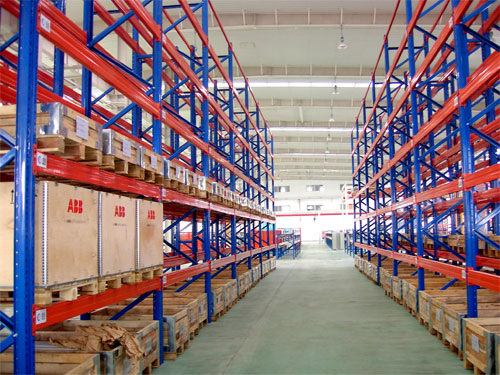Warehouse Shelving Design Tips

Shelving and racking systems are critical components in a warehouse facility, enabling you to maximize square footage by putting vertical space to use. The layout of the shelving design will impact everything from the functionality of usable storage space to how accessible it is and how productive your team is in the workplace. With this in mind, you may be wondering how you can maximize vertical space in your facility in the most productive and cost-effective many. These design tips can help you to take advantage of your space more fully.
As a first step, focus on the sizes of items that need to be stored in your facility. In many cases, this will not be loose items, and instead, it may be items in boxes, wrapped in crates or placed on platforms. Some warehouses will have very small items, but others may have large items that are several feet or more in height. The size of the items will dictate the height and depth of shelving that is needed as well as how much space may be needed between the aisles for easy accessibility.

After you have determined the ideal dimensions of shelves that are needed in your facility, you can then create a functional layout of the facility. Create a floor plan for the empty facility with accurate dimensions and with all doorways, bays and other built-in features indicated. Avoid blocking HVAC units, light fixtures and other components with your design. Then, consider the amount of space needed between the shelves so that your equipment, such as a forklift, can maneuver as needed. The ideal plan will place shelves along the perimeters of the walls as well as inside the area in straight rows when possible. This maximizes shelf space.
A final factor to think about when designing a warehouse relates to shelving materials. The materials used should be sturdy enough to hold the weight of the items they need to store. In some instances, it is beneficial to select shelving or rack systems that have adjustable shelf heights. This is particularly beneficial if you have current needs that vary or if you are aware of adjusting needs in the future. Some will invest in adjustable shelves even if there is not a current need so that the shelves can be used as needed in the future regardless of how business activities change.
If you are preparing to design or re-design your warehouse space, you may be aware that the design and features that are used will have a considerable impact on how many items can be stored in the space as well as how productive your team is while working in the facility. Take time to analyze your space and to create a thoughtful design. Then, select the right storage features to install in your warehouse. By making this effort, you can more easily benefit from a winning warehouse design.
